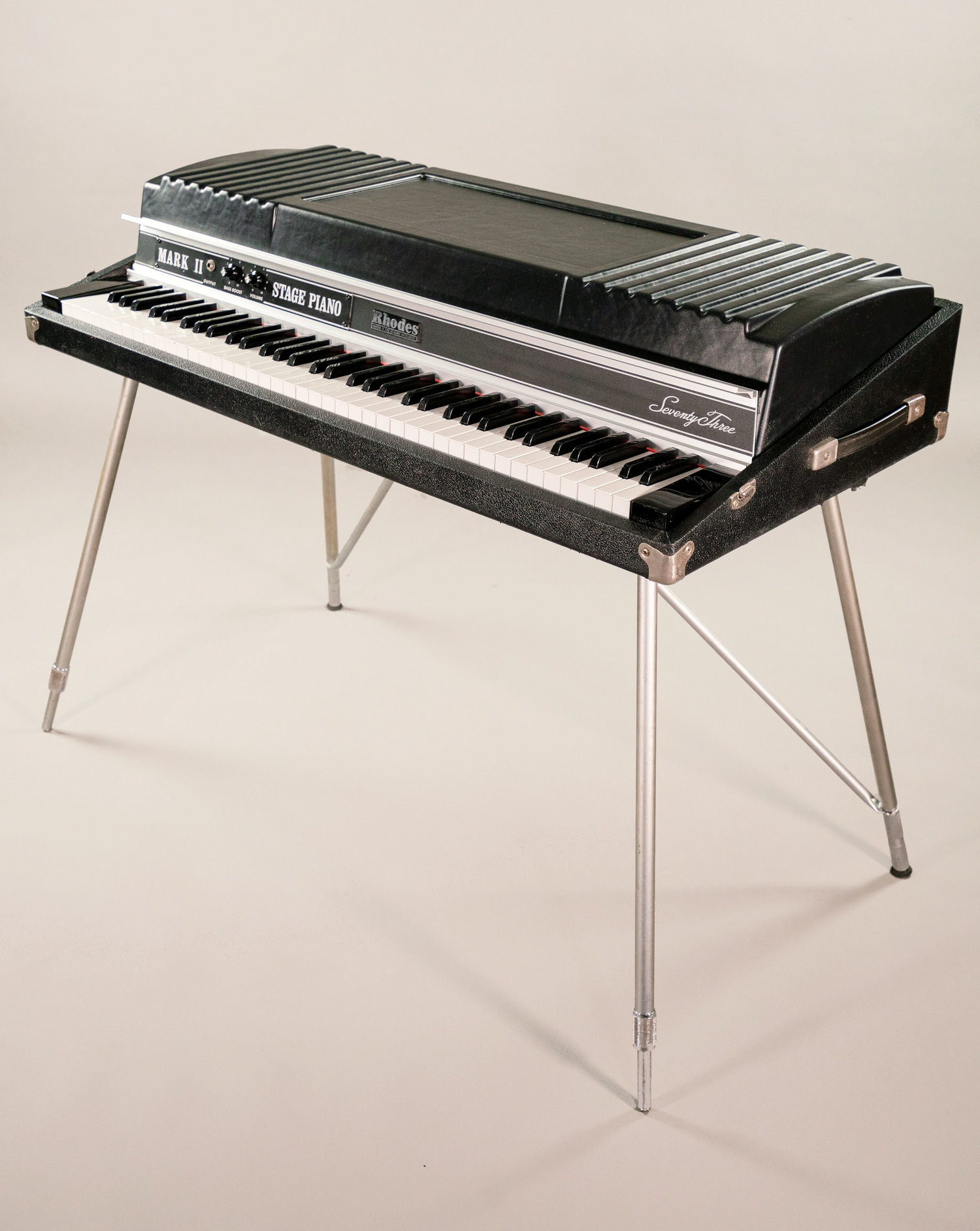What Should Come With a Fender Rhodes Stage Piano: A List
Fender Rhodes keyboards came with quite a few parts and accessories, many of which are subtle and easy to lose. If you’re unfamiliar with the Rhodes, it can be hard to tell if a keyboard you’re thinking about buying is complete or not.
To help take the mystery out of Rhodes buying, we made this list of the original Fender Rhodes parts and accessories that should come with any “complete” Rhodes keyboard. If you’re in the market for a Rhodes, take a look at our list and cross-reference it with any keyboards you’re thinking about buying.
You can definitely make use of a Rhodes that is missing original parts. Every vintage instrument is one-of-a-kind, so if there’s a lidless or legless Rhodes that really speaks to you, buy it while you have the chance. Just realize that if it is missing parts, it should be priced accordingly.
List of Parts for the Fender Rhodes Mk I and Mk II Stage Piano
The keyboard itself. This is the meat and potatoes of the Rhodes: all the keys and their corresponding pickups and mechanical parts, all housed in a wood tolex-wrapped case. There’s some subtleties in here, but if the keys make sounds the action parts are at least present. If this part is all you have, you can play keys.
In this photo, the inner lid is on the Rhodes already. The outer lid is the one on the floor. You can see the compartment where the legs and pedal would be stored.
The outer lid. The Rhodes should come with an enormous, tolex-wrapped wooden lid that encloses the entire keyboard and latches at the sides. It has a narrow compartment running along the length that snaps shut. Here you can store the legs and pedal.
The inner lid. This is the plastic lid that encloses the mechanical parts. This one doesn’t have any latches: it just slides in behind the metal faceplate and fits snugly against the wood case of the back and sides. (If a seller is unfamiliar with the Rhodes, sometimes they’ll put the lid in front of the faceplate. This is wrong, but of course easily reversible.) Unlike a Wurlitzer, the lid of a Rhodes isn’t necessary for shielding or even physically covering up the electronics, so sometimes people take it off when they play. This is cool because you can see all the moving parts, but unfortunately that makes the inner lid easy to lose. For that reason, one or both lids are often missing from a Rhodes.
The legs, crossbar, and knob. The stage Rhodes has four legs: two front and two back, each of which screw into the circular leg plates at the bottom of the case. The front legs end in a narrow, smooth rod, while the back legs end in a textured rod that is the same thickness as the leg itself. This textured part unscrews slightly, allowing the leg to accept the support crossbar. There is one crossbar for each back leg (that is, two crossbars total). Each crossbar hooks into the bottom of the leg on one side, and the leg is tightened around it. The other side attaches to the knob, which screws into a plate at the center of the case. It is common for the crossbar and/or the knob to be missing. In that case, some people will put the Rhodes on its legs without the crossbar. However, the instrument is heavy, so it benefits from the support of the crossbar. Reproduction crossbars (and legs and knobs) are available for purchase, so if you want to keep the Rhodes on its legs, there’s no reason not to use the entire assembly.
In this photo, you can see the leg crossbars, the knob, and the sustain pedal rod.
The pedal. The pedal assembly includes the pedal itself, two long rods and a wingnut. The pedal also has four feet that you can unscrew to keep the pedal level with the floor. The pedal inserts into a plastic piece that is wedged into a hole on the bottom of the case. Always test the pedal before buying a Rhodes to ensure that the interior sustain assembly is complete and working.
The vinyl leg case. When not in use, the legs can be stored in the compartment in the outer lid. To facilitate this, the Rhodes originally came with a vinyl bag that had slots for each leg and crossbar and rolled up to fit in the lid compartment. This prevents the legs from rolling around and smacking into each other when the Rhodes is packed up and in transit. Unfortunately, the vinyl bag is often lost to time. This isn't a big deal if you plan to park your Rhodes in the studio, but if you plan on gigging you’ll need to find an alternative way to wrap the legs to prevent them from being damaged.
The music rack. The Mk II came with a very simple music rack. It was a single sheet of plastic with the Rhodes logo on it, which could be wedged into a lip on the faceplate. The music rack is very rare.
Paperwork and other ephemera. Original brochures, receipts, or other paperwork are always a bonus. History is important when it comes to vintage instruments. Any paperwork that comes with your Rhodes helps tell the story of your instrument. As an aside, if you have vintage brochures that you’d like to share with us, send us an email because we’d love to see them.
Further Reading
Browse all of our articles on restoring vintage gear. Or, click on an image below.







